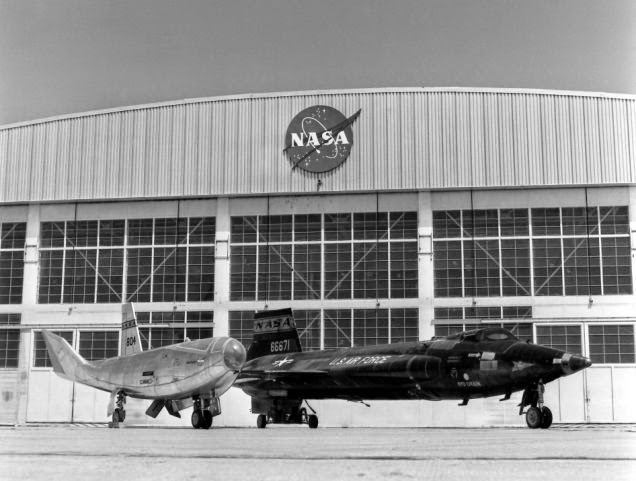The X-15 Program Never has been Topped
 |
| The HL-10 and X-15A2, shown here parked beside one another on the NASA ramp in 1966. |
Test pilot Joe Walker is one of the unsung heroes of aviation. He became the second man to ascend beyond 100 km when he set an altitude record of 352,200 feet for a winged vehicle on August 22, 1963. On July 19, 1963, at 18:20 UTC, as part of Test Flight 90, the X-15 helped to create the first American astronaut.
Joe Walker flew the X-15 to an apogee of more than 106km, making him the first American to exceed 100km from the surface, and only the second human to do so. He became the first human to make multiple spaceflights, again with the use of the X-15, on August 22, 1963, when he reached an apogee of more than 107km. He easily could have walked on the moon had he not perished in an unfortunate mid-air collision with a prototype XB-70 supersonic nuclear bomber.
On October 3, 1967, Major Pete Knight took the title of "the fastest man alive" when he flew an amazing 4,520 miles per hour (7,274 km/h) (Mach 6.7) in a specially modified X-15A-2. Today you can see the actual NB-52B 0008 Stratofortress that carried and released Major Pete Knight's X-15 on display by Edwards North Gate off Highway 58.
The X-15-3 (56-6672) research aircraft was maintained by ground crew at Rogers Dry Lakebed, where the landings occurred. The work of the X-15 team really began with the landing of the aircraft. Once it had stopped on the lakebed, the pilot stuck around to complete an extensive post-landing checklist. This involved recording instrument readings, pressures and temperatures, positioning switches, shutting down systems, the works. Only then was the pilot assisted from the aircraft. The small ground crew depressurized the tanks before finishing their work and carting the craft back to the hangar.
First, the specifications of the X-15:
- Length: 50 feet 9 inches (15.47 meters)
- Wingspan: 22 feet 4 inches (6.81 meters)
- Height: 13 feet 6 inches (4.11 meters)
- Empty weight: 14,600 pounds (6,622 kilograms)
- Loaded weight: 34,000 pounds (15,422 kilograms)
- Powerplant: 1× Thiokol XLR-99 liquid-fuel rocket engine developing 57,850 pounds (257.3 kilonewtons) of thrust
 |
| Do you recognize him? That's Neil Armstrong standing next to the X-15. |
 |
| This is NASA pilot Bill Dana, the last man to fly the X-15 (the 199th flight in the series) on Oct. 24, 1968. |
 |
| Note the white sealant paint. |
 |
| This is the Thiokol XLR-99 nozzle. |
2019




























No comments:
Post a Comment